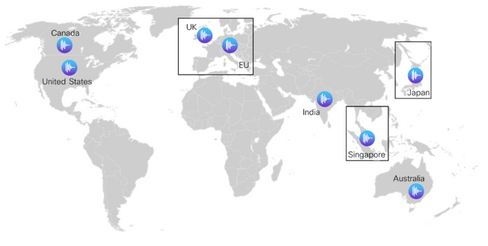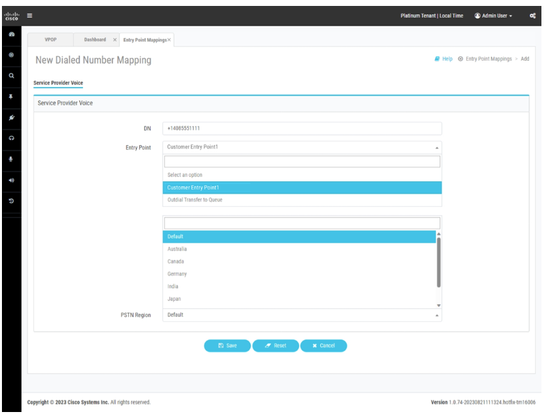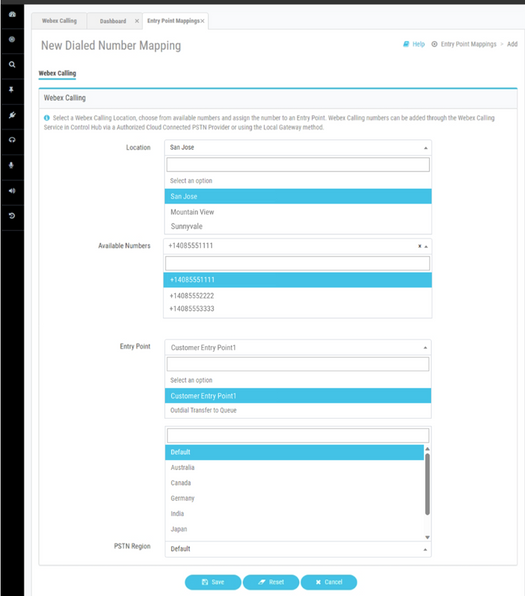Introduction
This document describes the notification you have received from Cisco about a Webex Contact Center (WxCC) platform update .
Prerequisites
Requirements
Cisco recommends that you have knowledge of these topics:
- WxCC
- Cisco support process.
Components Used
The information in this document is based on WxCC platform:
Background
This article is intended for customers who have received a platform update notification from Cisco. The purpose of the notification is to inform you about the update for your Webex Contact Center platform.
Cisco has contacted you, as an update needs to be applied to your WxCC service. This update has been planned to enable Cisco to introduce new features and enhancements to your contact center.
This article has been broken down into two sections to help you better understand and manage the platform update.
- New Features and Capabilities this Update Provides.
- Configuration Changes After the Update.
New Features and Capabilities this Update Provides
This update provides several features and capabilities including

Regional Media
Regional Media is a feature that allows global contact centers to optimize the media processing of their customer calls. When using WxCC provisioned with Cisco “Next Generation” media platform, media can be optimized to a geographical region with regional media. If your contact center is providing global service with PSTN entry points and agents distributed around the globe, you can leverage regional media. Regional media allows you to select where geographically you would like media for a given entry point to be processed. For example, if your contact center operates in both the United states and Europe, calls in the US are processed using US media resources and European calls are processed using European media resources. Using Regional Media in this way decreases audio latency for your customers increasing audio quality. Your contact center business logic still operates in your primary region, but only simple event and command information is exchanged between the contact center and media locations.
These map shows current media locations. Further media locations are planned.

WebRTC (Web Real-Time Communication) support for the Agent Desktop*
With this feature, agents can use the browser-based agent desktop with a headset without the need to use an external telephone or extension number. The WebRTC enabled agent desktop supports all the current voice functionality such as hold, retrieve, transfer, and conference. New features such as mute, auto-answer, and dial pad have been added to the Agent Desktop to facilitate browser-only use. Additionally, when an agent logs in using a browser, a new webRTC status indicator will show whether the voice channel is up, down, or in a connecting state. This is an important addition to the contact center portfolio leading to greater freedom and flexibility when deploying agents within the contact center environment, minimizing costs, and reducing onboarding times for deploying new voice systems.
Virtual Agent: Google DialogFlow CX*
Dialogflow CX integration with Webex Contact Center enables end users to have a conversational self-service virtual agent experience. It is a natural language understanding module that understands the nuances of human language. You can design and build virtual agent bots using a state machine approach for better end user and developer experience.
Experience Manager*
Enhanced Experience Management will allow contact centers to understand the voice of customers with Digital surveys and Interactive Voice Response Post Call surveys (PCS IVR). You will be able to survey your callers at the end of a call or a chat on their interaction experience. You first need to create a digital survey or PCS IVR on Control Hub. You can then implement the survey through the Flow Builder of Webex Connect (for Digital Survey) or the Flow Builder of Webex Contact Center (for PCS IVR). The survey will then be available to users during an interaction. The results of the survey are stored in the Survey Builder on Control Hub and will also contain contact center metrics that can be downloaded.
Background Noise Removal*
Webex Contact Center agents are able to benefit from the introduction of Webex background noise removal technology. Contact center agents receive calls from customers via PSTN based devices. These customers are calling from a diverse set of environments (for example, airports, stranded on a highway, homes, cafes, and so on) which in some cases can introduce excessive background noise that results in the agent being challenged to understand the conversation. Webex Contact Center solves this problem by applying Webex background noise removal to the voice media stream received from the customer so that the agent can clearly hear the customer.
Webex background noise removal is an advanced deep learning, speech science, and audio processing technology that can separate noise from human speech in any language. Webex Meetings and calling customers have benefited from this technology since its introduction and we are excited to introduce the capability to Webex Contact Center.
This feature will be available for premium agents on Webex contact centers in combination with regional media processing.
*Some features may not be available in all regions initially.
Configuration Changes After the Update
After the platform update has been applied to your contact center and the update has been finalized (typically 5 days after you update) you see some changes to configuration views in control hub.
When configuring Entry Point (EP) mappings for Directory Numbers (DN) you see new options on the configuration views. The exact changes are based on the PSTN integration your contact center has, that is VPOP or Webex Calling
For VPOP Customers
When mapping numbers to an entry point the layout and options on the configuration view have been updated.
- The DN field is now a free form input box. You no longer need to prepopulate VPOP numbers in control hub to select them on the entry point mapping view. When creating an entry point mapping, enter the DN being presented by this line in E.164 format.
- The Entry Point is the name of the entry point you want to associate with this DN.
- A new field called PSTN Region has been introduced. This field is used to select the region you would like the Webex Contact Center to process the media for this call. When configuring a VPOP entry point the media region must match the VPOP region for the entry point. For example, If the call is being presented to a VPOP location in Germany (Europe) the PSTN Region must also be set to Germany. The default region is always the region where your Webex Contact Center is hosted. If your Webex Contact Center is hosted in the United States, then this is your default region.

Entry Point Mapping for Webex Contact Center provisioned with VPOP integration.
Webex Calling Customers
Webex Calling requires directory numbers to be created in a location. Before configuring a contact center entry point mapping, you must provision numbers within a Webex Calling location. These numbers could be provisioned as
- Cloud Connected PSTN numbers from a service provider.
- Bring your own PSTN numbers via a local gateway.
Please see Webex Calling documentation for more information on this process.
When mapping Webex Calling numbers to an entry point, the layout and options on the configuration view have been updated. To integrate a Webex Calling DN to your Webex Contact Center the DN must first be provisioned in Webex Calling.
- The Location field allows you to select the Webex Calling location to view numbers associated to this location.
- The Available Numbers will be populated with unallocated numbers based on the Location you have selected in the previous field.
- The Entry Point is the name of the entry point you want to associate with this DN.
- A new field called PSTN Region has been introduced. This field is used to select the region you would like the Webex Contact Center to process the media for this call. When configuring a Webex Calling entry point the administrator can choose which region media must be processed in. The media region must be aligned to the region the call is being delivered in or the region the agents are based in.
If your contact center only operates in a single region you can select default. The default region is always the region where your Webex Contact Center is hosted. If you Webex Contact Center is hosted in the United States, then this is your default region.
If your contact center operates in the United States but you have calls and agents in Europe, for European calls you would set PSTN Region to Germany or UK to process media for these calls in Europe.

Entry Point Mapping for Webex Contact Center provisioned with Webex Calling integration.
Related Information
Further information on configuration can be found in Webex Contact Center documentation.





 Feedback
Feedback